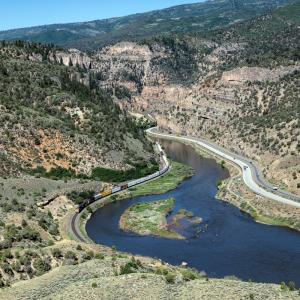Assessing Drought in the Era of Climate Change
Date
In recent years, there have been major advancements in the United States' ability to actively manage drought risks by collecting the most relevant up-to-date and on-the-ground information and developing tools for assessing drought conditions. These assessments range from current severity evaluations to in-depth analyses of drought causes, impacts, and duration; they are crucial in helping communities prepare, mitigate, and respond effectively to drought situations. The impacts of drought can be severe, with consequences such as wildfires, limited surface water, poor water quality, disruptions to recreation, low soil moisture, poor pasture conditions, crop yield loss, rural mental health issues, and damage to ecosystems.
The 2023 “Drought Assessment in a Changing Climate: Priority Actions & Research Needs” report synthesizes contributions from over 100 experts from 44 institutions in the drought research and practitioner fields, including the NC CASC’s climate science lead, Dr. Imtiaz Rangwala; assistant regional administrator, Dr. Aparna Bamzai-Dodson; and Tribal Engagement Specialist, James Rattling Leaf, Sr. The report outlines key actions and research questions from a two-day meeting earlier in 2023, aimed at advancing drought assessment in a changing climate. The report captures a wide array of ideas, emphasizing 15 areas to improve drought assessment while highlighting their interconnectedness and the necessity for collaborative approaches. It also covers related topics like planning and governance, underlining their significance in understanding and addressing drought. As Dr. Rangwala states, “I felt this workshop was a bit overdue as climate change has been influencing extreme weather patterns including drought processes for some time now and not being adequately accounted for in current drought monitoring and situational awareness. Nonetheless, I was happy to see NIDIS take the lead in bringing many of the relevant people together and developing this comprehensive report to guide the path forward. But this is perhaps just the beginning.”
Drought assessment in a changing climate is critical for several reasons. First, climate change is altering precipitation patterns, elevating atmospheric evaporative demand, and increasing the frequency and intensity of droughts. Effective drought assessment helps in understanding these changes, allowing for better forecasting and management of water resources. Second, it aids in the development of strategies to mitigate the impacts of drought on agriculture, ecosystems, and human communities. Thus, timely and accurate drought assessments are vital for informing policy decisions and preparing for the challenges posed by a changing climate, such as water scarcity and agricultural disruptions. Furthermore, water is deeply significant in Tribal cultures and affects the survival of culturally important plants and animals, as well as those used for medicinal purposes. Tribal nations face unique challenges in drought planning, including limited funding and a lack of reservation-specific data and monitoring stations. Despite efforts to develop drought preparedness and response plans, there's often a gap in translating these plans into action, mainly due to inadequate funding and competing priorities. “Tribal Nations have a close and long standing relationship with nature and the environment, as such their Traditional Ecological Knowledge (TEK), and their wisdom is incredibly important. This includes how to cope with local-level climate variability and effectively respond to major environmental changes, such as drought,” says James Rattling Leaf, Sr.
Improving drought indicator performance, as mentioned in this report, involves the integration of multiple data sources, such as satellite observations, ground measurements, and climate models, to provide a comprehensive view of drought conditions. Enhancing the spatial and temporal resolution of data can lead to more accurate and localized drought assessments. Additionally, incorporating the impacts of climate change into drought models can improve predictions. Collaborating with stakeholders at the frontlines of these changes, such as farmers, water managers, and Tribal rights holders, ensures that the indicators are relevant and useful for decision-making. Lastly, continuous updating and validation of drought models against real-world observations are crucial for maintaining their accuracy and reliability.
To access the full report: https://www.drought.gov/documents/drought-assessment-changing-climate-priority-actions-research-needs
To see the report webpage: https://www.drought.gov/drought-in-action/drought-assessment-changing-climate-report


